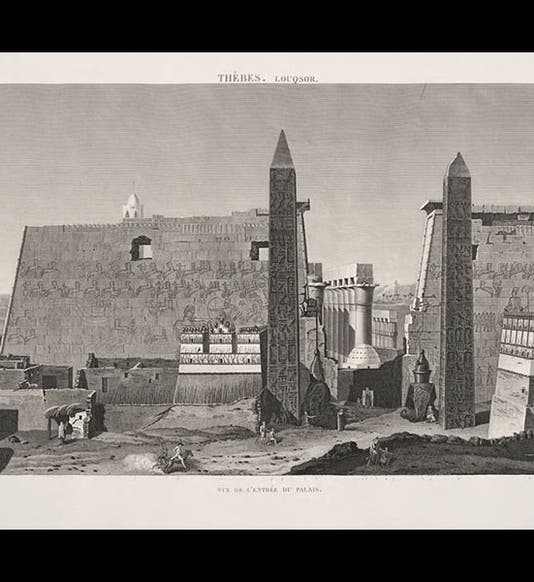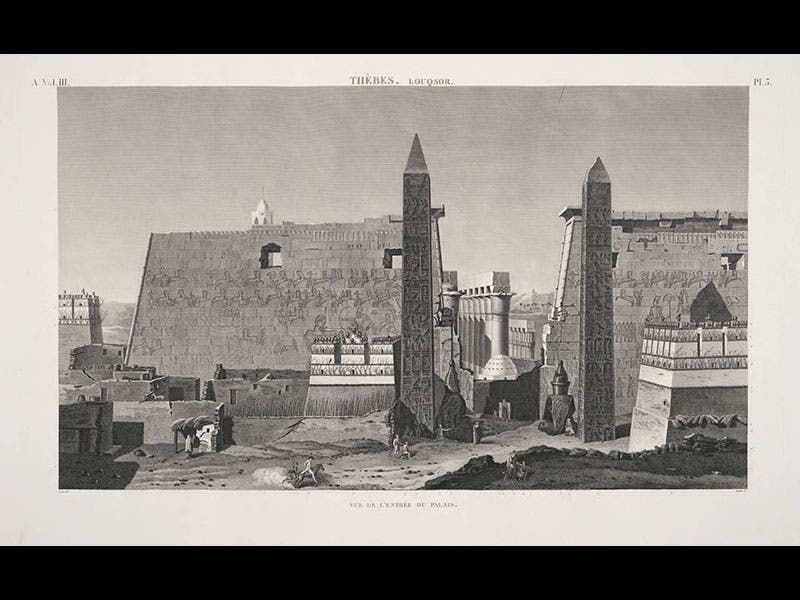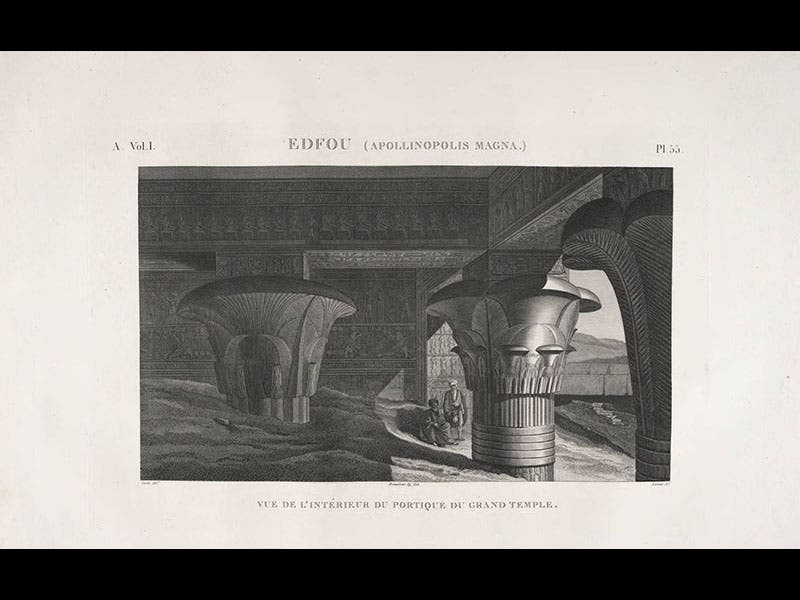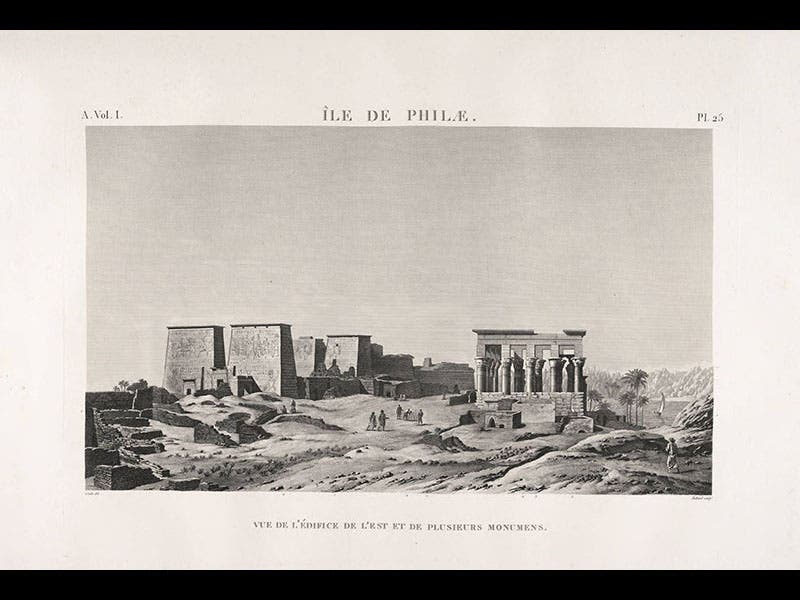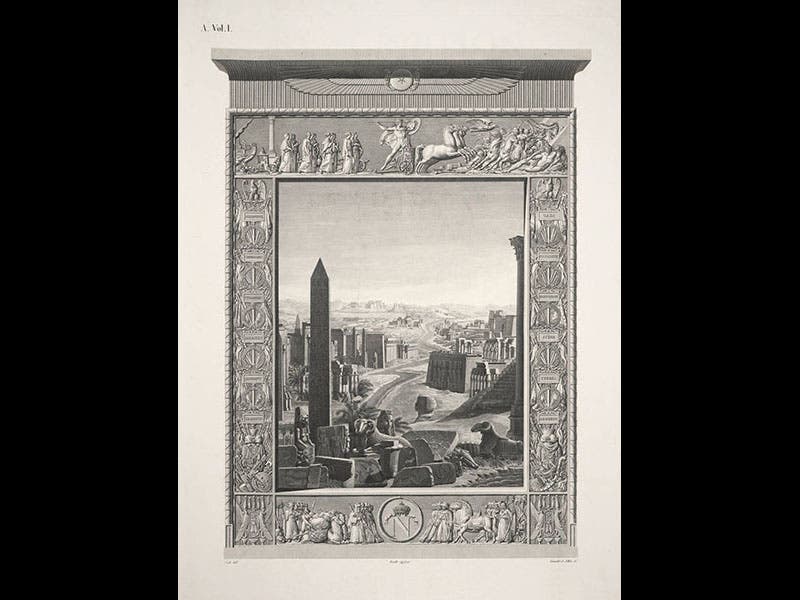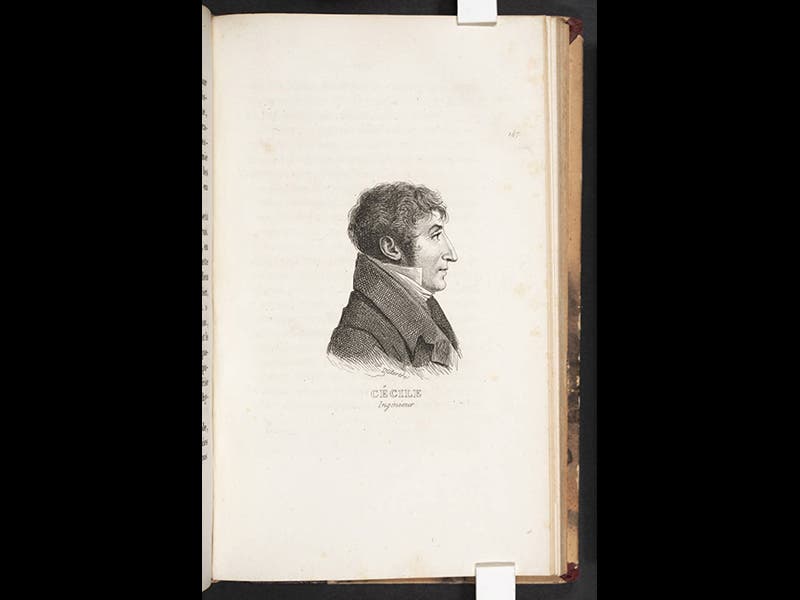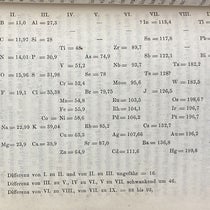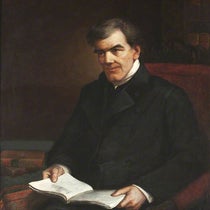Scientist of the Day - François-Charles Cécile
François-Charles Cécile, a French topographic engineer, was born Oct. 19, 1766. In 1798, Cécile was one of 151 engineers, artists, and naturalists, selected to join Napoleon on his invasion of Egypt. These savants gathered in Cairo, organized a society, the Institute of Egypt, and then spread out across the country, mapping the landscape, looking for lost canals, and accidentally discovering the multitudinous ruins of ancient Egypt. Cécile was intensely interested in the antiquities, and he drew most of them, including Luxor (see first image above), Karnak, Edfu (second image), Denderah, and Philae (third image). Like many of the artist-engineers, he liked to put his fellow engineers into the landscape—artists at work—as we see in the detail of a temple at Philae (fourth image).
All of Cécile’s artwork appeared in the Description de l’Egypte (1809-28), which we exhibited almost in its entirety in our 2007 exhibition, Napoleon and the Scientific Expedition to Egypt. Cécile also designed the frontispiece for volume 1 of this 23-volume set, which manages to condense all the ruins of ancient Egypt, from the Pyramids to Philae, into one Nile landscape (sixth image). And like most of the savants, Cécile managed to have his likeness sketched by the expedition portrait artist, Andre Dutertre (sixth image); all the portraits were later printed in a separate publication, which gives us a rare and valuable visual record of the participants in Napoleon’s bold scientific adventure.
Dr. William B. Ashworth, Jr., Consultant for the History of Science, Linda Hall Library and Associate Professor, Department of History, University of Missouri-Kansas City. Comments or corrections are welcome; please direct to ashworthw@umkc.edu.

